Example of Waste Dump Failure
From ‘The Logbook,' the newsletter of the Center for Science in Public Participation, Spring 2012, and reprinted with the permission of CSP2.”
Excerpt from Funding Reclamation & LTMM article
Stuff Happens
An example of a cost that was unintentionally omitted occurred at the Zortman Mine. The minesite, located high in the Little Rocky Mountains in northern Montana , experienced a 1-in-500 year storm event in May, 2011. The lower approximate ¼ of one waste dump washed down a small, steep canyon below the minesite. Although a thorough scientific autopsy of the failure has not been undertaken, it is probable this failure was due to two factors: (1) the saturation of the lower portion of the waste dump and subsequent slumping due to increased pore pressures (pressure transmitted by water between mineral grains) created by the weight of the dump itself; and, (2) mechanical wasting and chemical decomposition of the material in the dump itself related to the oxidation of sulfide minerals over several decades. The waste rock was placed at angle-of-repose, but as the sulfide minerals oxidized (releasing metals contaminants into the water, which was collected and treated) the waste rock physically broke down into smaller rocks and particles. The smaller the size of the rocks, the lower the natural angle-of-repose. So, as the waste rock degraded, material that was originally placed at a stable angle-of-repose became over-steepened and unstable.
It is estimated that it will take over $1 million just to stabilize the failed waste dump. At this point picking up the material that washed into the canyon below the mine would probably do more damage than good, and is not a part of this cost estimate. However, there is no money in the reclamation surety to pay for any of this. This was not a “reasonably foreseeable” event, so was not covered by the financial surety. Monies to accomplish this work, when and if they become available, will come from government agencies (i.e. general tax revenue) because the mine operator went bankrupt in 1998, and there is no legally liable entity to pursue for further funding. The taxpayer then becomes the only remaining source of funds.
This is not an example of incompetence or malfeasance, but it is the type of thing that can still happen under present procedures for calculating reclamation financial sureties. The inertia of large bureaucracies is difficult to change, and there is pressure from the regulated companies not to increase the costs of mining. ....
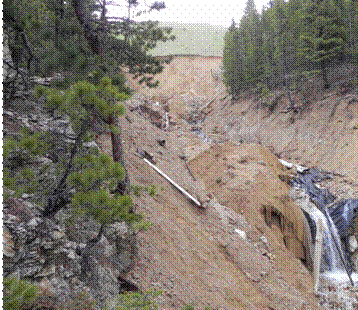
Alder Gulch Waste Dump failure at the Zortman Mine
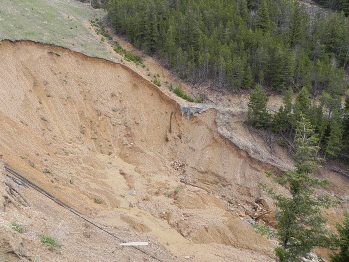
Alder Gulch Waste Dump side view
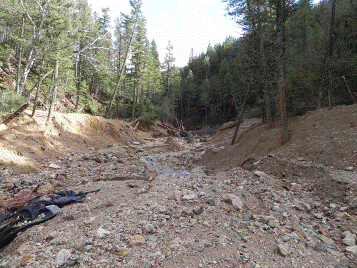
Waste in channel below Alder Waste Gulch Dump
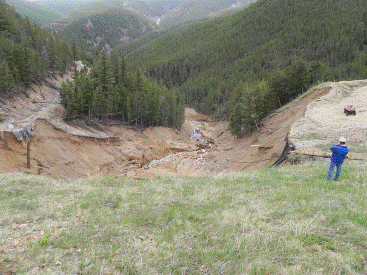
Alder Gulch Waste Dump failure looking downhill
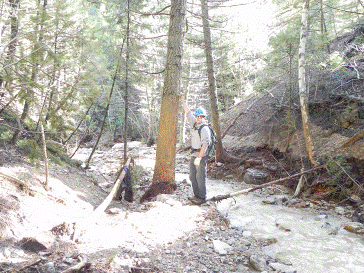
Riparian zone damage below Alder Waste Gulch Dump
HOME